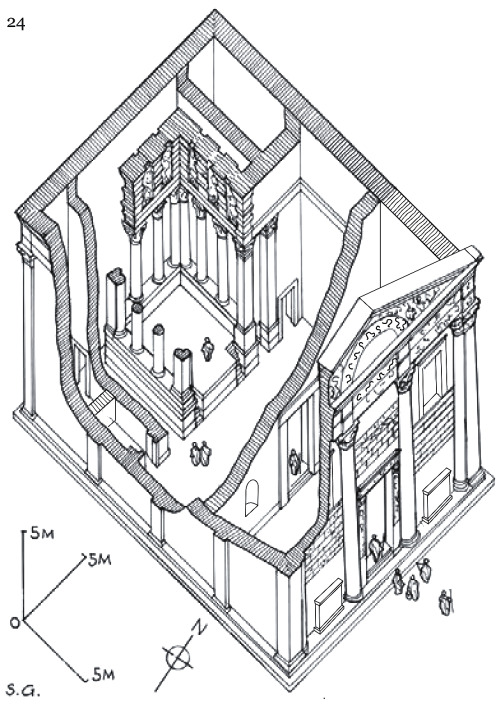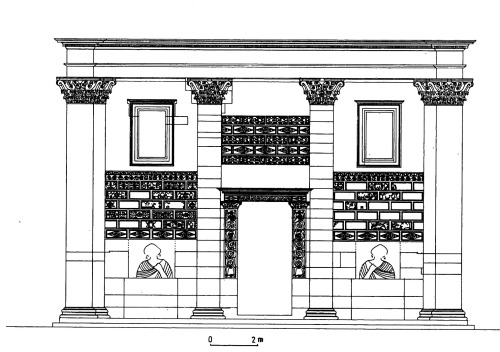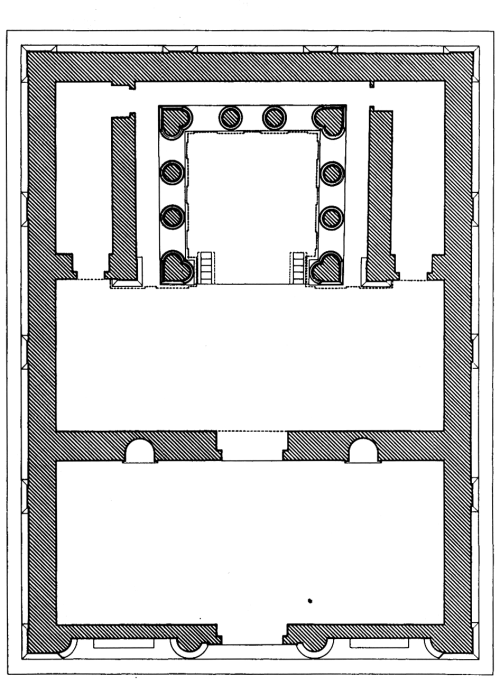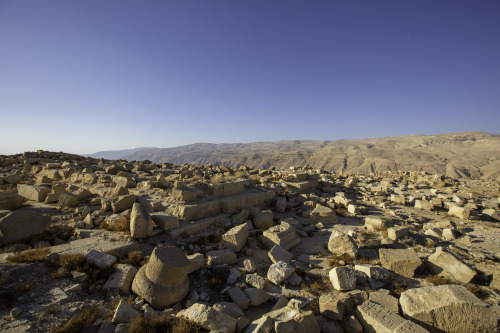#dushara
Khirbet edh-Dharih
Jordan
100 CE
22x16 m
Dharih’s Nabataean settlement can be roughly dated to around 100 CE. It flourished during a period of prosperity in times of the Roman annexation of the Nabataean Kingdom.
The temple (22 m x 16 m) consists of an unroofed vestibule to the south which opens to an almost square complex to the north, with a cultic platform in its center. The façade facing south was 15 meters high. It had two protruding pedestals that used to host statues on each side of the entrance door, and two large windows above them. The architrave was decorated with carved vines and animals, and had Medusa heads at the corners. The frieze above displayed figures of the Zodiac alternating with winged Victories, and the triangular pediment, sea centaurs crowned by flying Victories. Standing eagles guarded the central figures. While several of the mentioned figures can be seen at the Jordan Museum, the central couple of gods, Dushara and al-‘Uzza, can only be guessed from fragments.
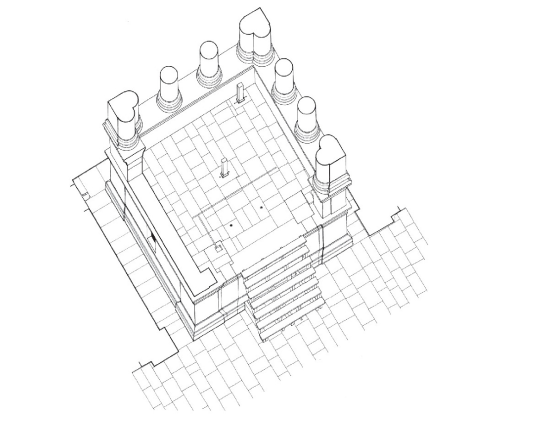

The columned podium (7 x 7 m, height 1.40 m) in the center is accessed through two narrow stairways in the front. In the central slab of its pavement is a rectangular hole flanked by two small circular ones. Beneath the slab, a stone basin was found. The excavators interpret this as a system for sticking a betyl, and collecting the offering liquid after the ritual libations. It is not clear if this would have been wine, oil, or even blood. In a later phase, further two betyl holes were added in diagonal, which indicates a cult of a triad of gods.


A narrow U-shaped corridor surrounds the podium on three sides to circumambulate it in ritual processions. The hallway also gives access to two crypts situated under the platform and to the corner rooms. The northeast one encloses a staircase that used to lead to a terraced roof, and the two on the northwest side have large wall cupboards.
It is assumed that the craftsmen of the Dharih temple were the same who decorated the temple on the peak of Jabal et-Tannur.
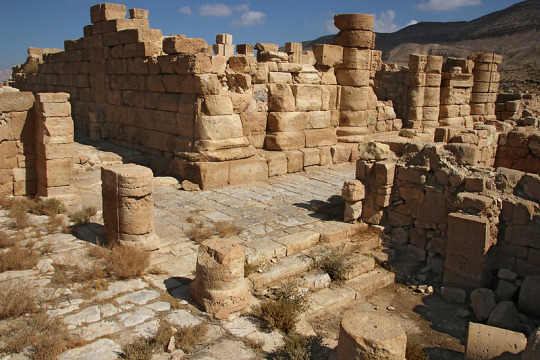

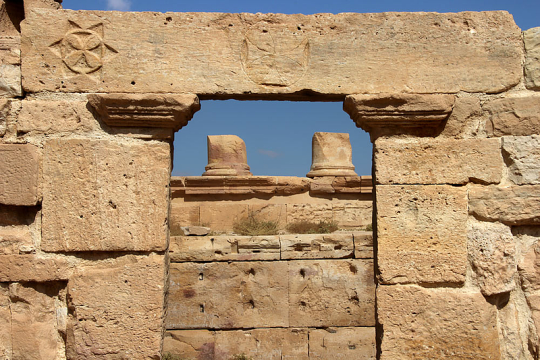



Post link
Khirbet et-Tannur
Jordan
2nd century BCE - 4th century CE
The Nabataean temple ruins atop of Jabal et-Tannur overlook the confluence of Wadi al-Hasa and Wadi La‘aban north of the modern town of Tafila. From the 2nd century BC through to the middle of the 4th century CE the sanctuary was an important pilgrimage place for the Nabataeans to worship, and celebrate seasonal rituals and banquets. With no spring for water supply, it was not a permanent settlement. It functioned in connection with the neighboring village and temple of Khirbet edh-Dharih, some 7 km south on the old caravan route coming from the capital city of Petra.
The sanctuary consisted of a temenos (temple enclosure), with a forecourt and roofed colonnaded walkways on the north and south sides connecting to rooms equipped with benches on three sides, called triclinium for resting and ritual banqueting.
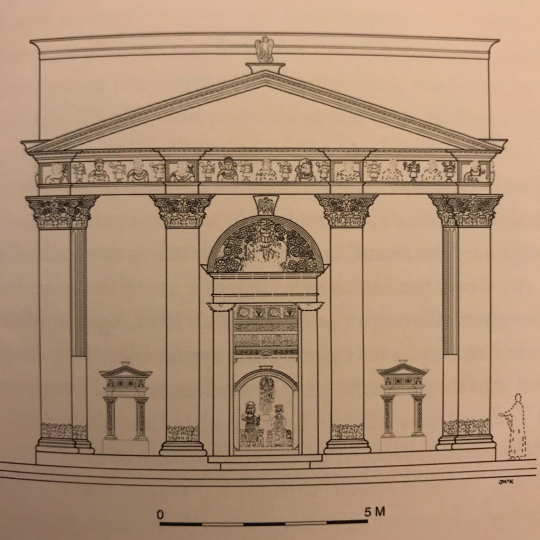
The eastern façade of the inner temenos was also richly decorated. The famous relief known as the Vegetation Goddess, veiled by leaves and framed by flowers with an eagle above her comes from a semi-circular pediment over the main portal. Both sculptures are today on display at the Jordan Museum in Amman. Scholars suggest to see in her the goddess of the nearby spring of La‘aban. An inscription found on site dated 8 or 7 BC mentions building works dedicated by the guardian of this spring. After 2000 years, this name lives on in the name Wadi La‘aban, the river bed connecting Khirbet et-Tannur and Khirbet edh-Dharih.

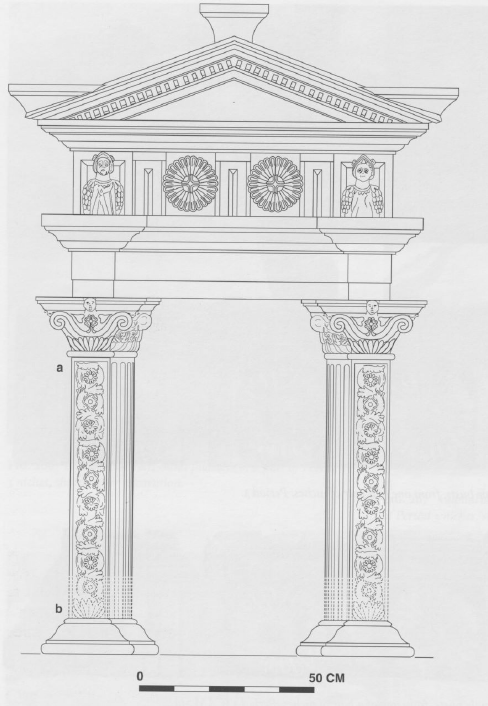
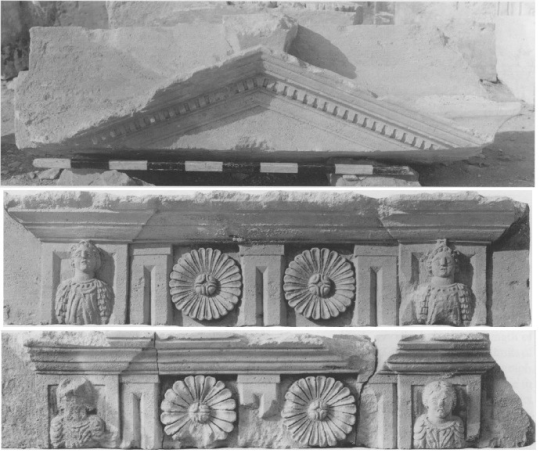
The inner temenos (sacred area) was an unroofed square enclosure (ca. 10 x 10 m) with an altar platform in the center that had a frontal niche to host the cult statues of the main god and goddess. A male cult figure holding a lightning bolt and flanked by bull calves was found during excavations, probably the supreme god Dushara with attributes and iconography adopted by the Nabataeans from neighbor cultures. From the goddess Allat only one foot and a part of her lion throne were found. Placed between them might have been the zodiac ring encircling a bust of a Tyche, carried by a winged Victory (Nike), another one of the famous discoveries at Khirbet et-Tannur. The upper zodiac piece is in the collection of the Cincinnati Art Museum, USA, together with the main cult statues. The sculptures date from the main construction phase of the first half of the 2nd century CE. The altar niche was surrounded by an elaborate decoration including busts also representing zodiac signs, from which two have survived: the personification of Pisces (in Amman) and Virgo (in Cincinnati).


A staircase led to the altar’s roof, where a sacred flame was lit and animal sacrifices were burnt. Incense, grains and offering cakes were burnt as offerings on either side of the altar niche, and on smaller free-standing altars scattered around the site as well.
The east-west axis alignment of the sanctuary ensured that the rising sun would illuminate the altar niche during the spring and autumn equinoxes, when special rituals and celebrations took place to ensure agricultural abundance. The remains of ceramic lamps with nozzles on several levels suggest night-time processions and rituals to worship zodiacal deities appearing in the starry sky.
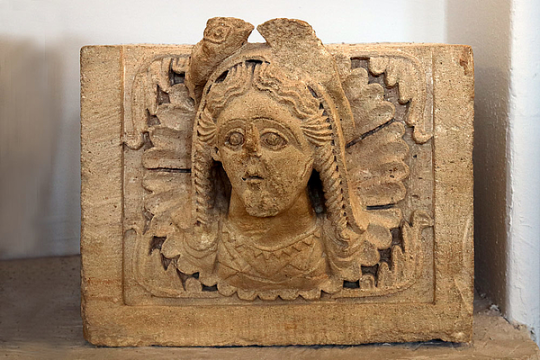

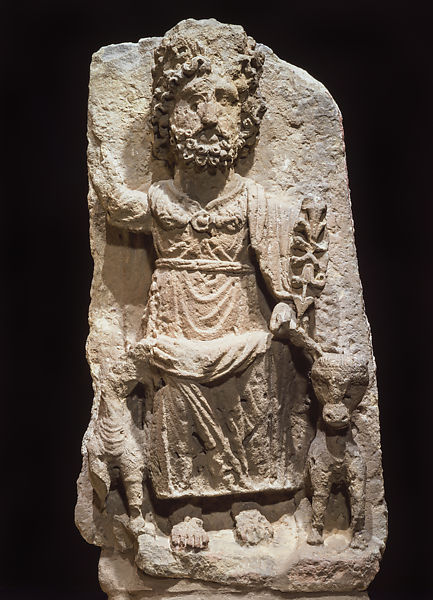

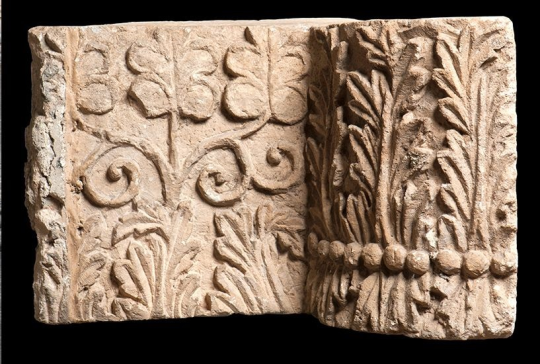


Post link

